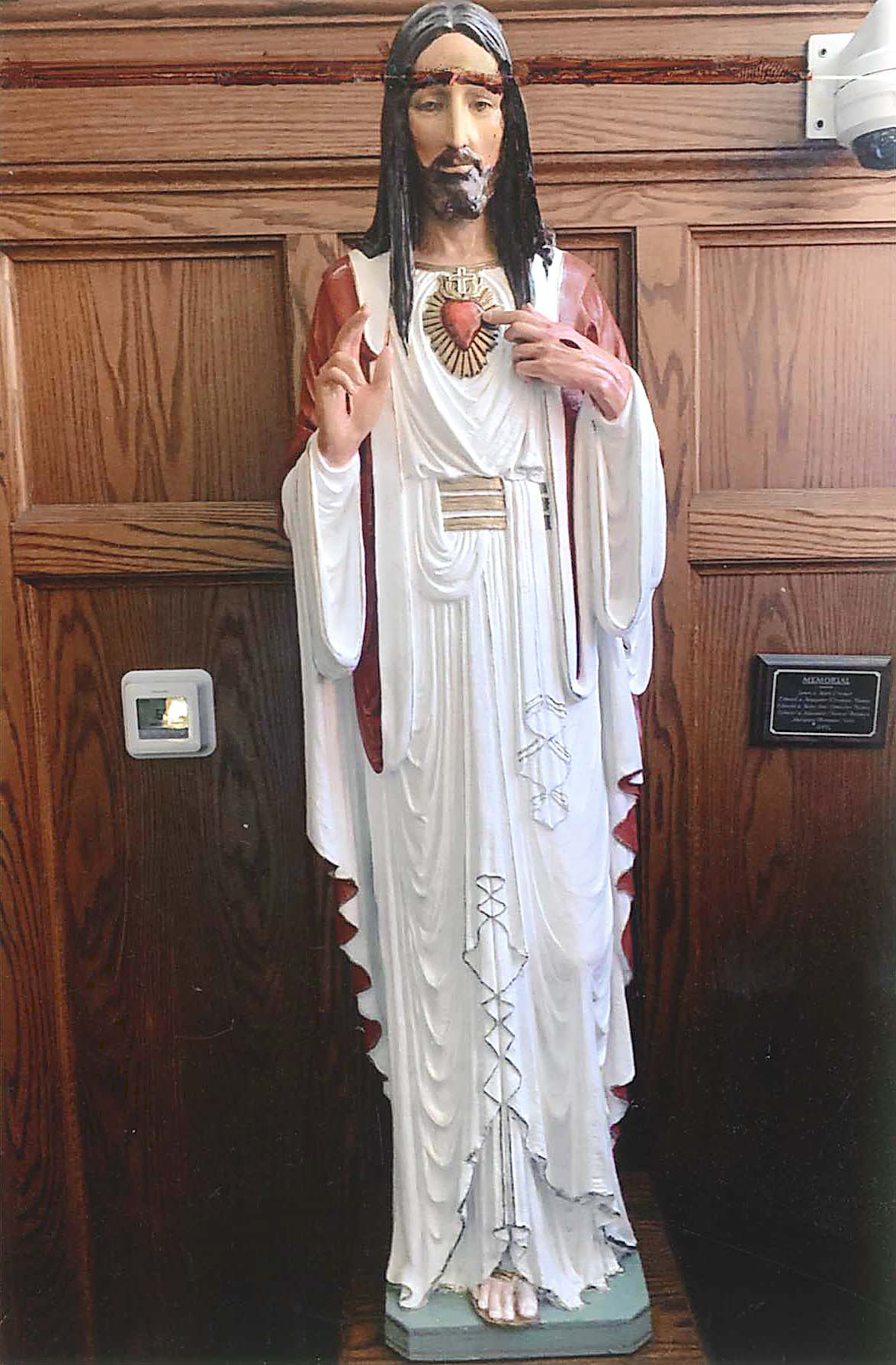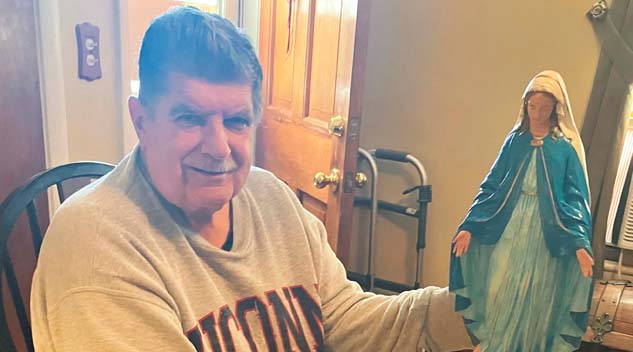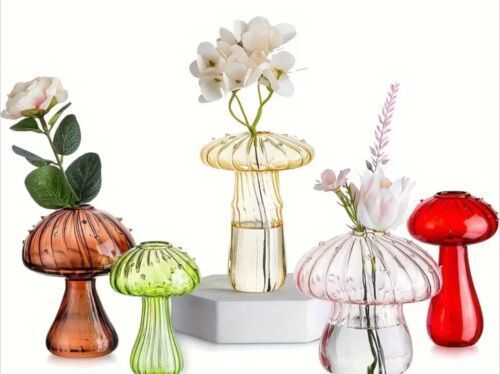#Ken #Tuckey #Antiques #Arts #Weekly

This week’s interviewee is named Ken Tuckey. That’s not some wacky nickname, stage name or nom de plume. That’s the name his parents, working-class factory people, gave him nearly 75 years ago. Tuckey, however, has overcome more than the chuckles that may arise as he introduces himself. Beset by some serious health conditions, the Naugatuck, Conn., man had to forego completing a college art curriculum to take a factory job in order to help support his family after his father was disabled by a knee injury. Tuckey has reconnected with his art. It’s a story of restoration on at least two levels, one that he wants to put before readers of Antiques and The Arts Weekly.
Tell us how you came to restore the plaster Sacred Heart of Jesus statue.
I am a parishioner of St Francis Church in Naugatuck. My Eucharistic Minister, Jan Migeski and I were discussing my art background and Jan mentioned that there was a holy statue at St Francis Church that was in great need of repair. He stated that it was the Sacred Heart of Jesus, which was approximately 4½ feet tall. I told Jan I had seen it many times and knew it was in bad condition. Jan asked me if I would be able to restore the statue. I told him that I had never repaired a statue before, but if I can paint and draw, I can restore this statue.
What was involved in the restoration of that statue?
In attempting to paint and restore a 4½-foot plaster statue that was more than 100 years old and had never been cleaned, it was going to be a challenge. I said to myself, What have I gotten myself into? I had faith in myself and knew I could do it. First step was the cleaning process of the entire statue. I used warm water, liquid soap and a fine bristle brush, making sure the plaster did not crumble. Then using fine sandpaper and fine steel wool in the hard to clean areas, I also had to fill in holes and cracks with spackling compound. Once dried, I applied acrylic gesso, which is a surface preparation primer that helps the acrylic paint to adhere to the whole statue.
Before starting to paint, I consulted with Father John of St Francis Church about the selection of colors for the garments and we came to an agreement. We agreed that the Sacred Heart would be painted “blood red” and the burst that surrounds it the heart would be painted in gold leaf. I also used gold leaf paint to accent various areas of the statue.
I began to paint the full statue with acrylic paint. At times there were difficult moments but I never gave up. I applied approximately six coats of polyacrylic clear gloss finish on the heart and Jesus’ hands. Previously many parishioners had touched the heart and hands of the statue and the paint had worn off. I then applied four coats of polyacrylic clear satin finish on the entire statue and let it dry for two days to seal the paint.

Restored plaster Sacred Heart of Jesus statue. Photo: Ken Tuckey.
What are the main inspirations for your art? Who do you admire and try to emulate the most?
All my life I have admired many artists who paint subjects that mean something in art. As for modern art, I can’t understand what their meaning is in some of the subject matter. I enjoy realism, something that the artist paints that expresses his or her style.
Andrew Wyeth, N.C. Wyeth and Jamie Wyeth are artists I admire and respect. When I attended Paier School of Art, I was introduced to the Wyeth family by artist Peter Pookas, who was also a teacher. Peter’s work also reminded me of Andrew Wyeth. I also admired Ken Davies, who was the dean of Paier School of Art and a close friend and artist. I attended many of Peter’s and Ken’s art exhibits. Again, although it is hard to understand Mmdern art, in this day and age there will be a place for all types of art.
Do you have a studio or do you simply find space at home to do your work?
At this time I do not have a studio, but I do have an area in my home that is comfortable to do my paintings and statue restorations. I have a spare room that houses all my equipment, paints, reference books and art props.
Is the restoration work finished? What will you do next?
The restoration of the statue of the Sacred Heart of Jesus is completed and it is back at St Francis Church. Father John and the parishioners are very happy and many have said the statue is beautiful. I also restored a smaller statue of the Virgin Mary, which the church received, and I am presently restoring one more Virgin Mary statue for the church.
My inspiration is to continue to paint not only still life scenes but also to continue to restore statues. Since the restoration of the Sacred Heart of Jesus I have had many calls from people who want their statues restored. I have to thank my wife for giving me the courage to move on in the art field.
I also feel I have accomplished something in my life that my heart was set out to do. I now have a piece of myself in the church and parishioners will pray and look at the Sacred Heart of Jesus for many years to come.
Do you experience a spiritual connection with these restored works?
I have always been a religious person. I feel that God and the Holy Mother have guided my life, and I know while I was restoring the Sacred Heart of Jesus they were beside me.
Oils and paints can contain some toxic chemicals. Are you taking care to protect yourself?
Early in my life when I painted in oil, the art teacher never told us how toxic the paints were, and maybe they never knew it until years later. I found out later in my life. I was diagnosed with chronic leukemia. I take chemo pills every day and, thankfully, so far I am in remission. I would advise anyone who paints in oils to get a blood test. Don’t wait. I now use water-based paints and stay away from oils.
—W.A. Demers




